
What is a pterygium?
A pterygium (pronounced tuh-RIJ-ee-um) is a non-cancerous, fleshy growth that develops on the conjunctiva (which covers the white of the eye) and can extend onto the cornea, the clear window at the front of your eye. Often triangular in shape and containing visible blood vessels, it’s sometimes referred to as “surfer’s eye” because it’s frequently associated with long-term exposure to sun, wind, and dust. It is, therefore, more common in populations living in hot and sunny countries but can occur anywhere.
While pterygia are usually harmless, they can cause a variety of uncomfortable symptoms and, if left untreated, can grow to obstruct vision.
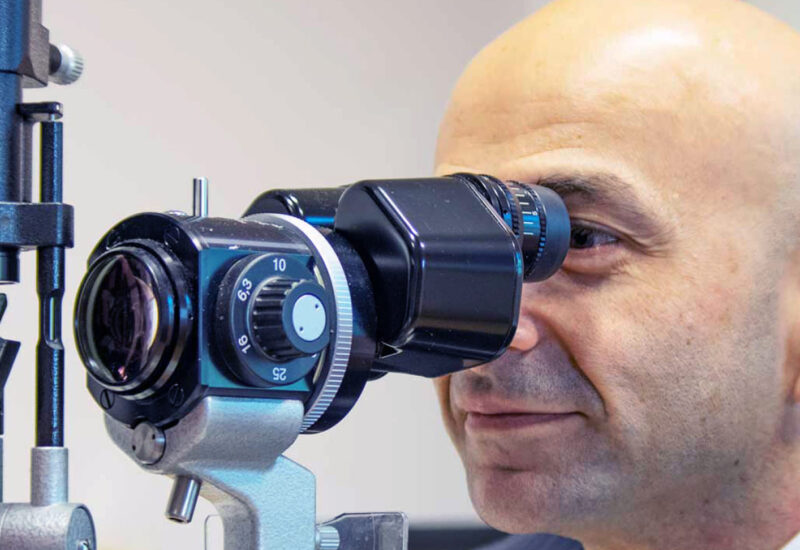
Symptoms of pterygium
A pterygium is a growth on the eye that is often associated with long-term exposure to sun, wind, and dust. The most common symptoms include:
- A feeling that something is in your eye (gritty sensation).
- Redness and inflammation.
- Itching or burning.
- Dryness.
- Blurred or distorted vision, as the growth can change the shape of the cornea (astigmatism).
A pterygium may also be a cosmetic concern for some individuals due to its appearance.
Treatment Options
The treatment for a pterygium depends on its size and the severity of your symptoms.
Non-Surgical Treatment
For mild to moderate cases, Professor Muhtaseb may recommend a non-surgical approach to manage discomfort. This can include:
Lubricating eye drops or artificial tears to relieve dryness and irritation.
A short course of steroid eye drops to reduce intense inflammation and redness.
These treatments will help with symptoms but won’t remove the growth itself.
Pterygium Removal Surgery
Surgery is the only way to remove a pterygium. This procedure is typically recommended when:
- The pterygium is causing persistent discomfort that doesn’t improve with eye drops.
- The pterygium is growing towards the centre of your eye, potentially affecting your vision.
- The pterygium is causing significant astigmatism, leading to blurred vision.
- The appearance of the growth is a significant cosmetic concern.
Professor Muhtaseb specialises in pterygium excision and uses OmniGen amniotic membrane to cover the area left by removing the pterygium. By using this novel approach, the surgical time is greatly reduced and patients experience a much more comfortable post-operative recovery.
The traditional method of covering the exposed area involves usig a conjunctival autograft. This is a surgical technique where the pterygium is removed, and a small, healthy piece of conjunctiva (the autograft) is taken from the same eye and used to cover the exposed area. The graft can be secured with a special surgical glue or fine stitches. This method is associated with longer surgical time, more post-operative irritation from the stitches and can take longer to settle than surgery using OmniGen.
Pterygium excision surgery using OmniGen is a quick, day-case procedure performed under local anaesthetic.

What to Expect During and After Surgery
The operation typically takes less than 30 minutes. You’ll be awake but your eye will be completely numbed with drops and a small amount of local anaesthetic placed under the pterygium, so you won’t feel any pain.
Following the surgery, you may experience some soreness and redness, which will gradually improve over a few days, and can be relieved by use of lubricating artificial tear drops. You’ll be given antibiotic and steroid drops to use at home to prevent infection and control inflammation.
Full recovery can take a few weeks. We recommend a period of one to two weeks before resuming work, depending on your job. You’ll need to avoid strenuous activities and swimming for a few weeks to ensure the best possible outcome.
Pterygium Surgery Cost
The cost for pterygium surgery can vary depending on the complexity of the case and the surgical technique used. We’ll provide a detailed, fixed-price quotation following your initial consultation.
For a comprehensive assessment and to discuss your treatment options, please contact us to book a consultation with one of our expert ophthalmologists.
Pterygium FAQs
The main cause of pterygium is widely believed to be excessive and long-term exposure to ultraviolet (UV) radiation from the sun. Other environmental factors, such as living in a dusty or windy climate, can also increase your risk. People who spend a lot of time outdoors without proper eye protection are most susceptible.
While a pterygium is a benign (non-cancerous) growth, it should be monitored. You should seek medical advice if you notice a growth on your eye. While you shouldn’t panic, it is important to see a specialist to rule out any other conditions and to get an accurate diagnosis. Pterygia can cause discomfort, redness, and in some cases, grow to a size that can blur or distort your vision. Early diagnosis and management are key to preventing these issues.
Unfortunately, you cannot remove a pterygium without surgery. Eye drops and other non-surgical treatments can help manage the symptoms—such as dryness, redness, and irritation—but they will not remove the growth itself. Surgery is the only solution for pterygium removal.
Pterygium is typically classified based on its size and effect on the eye, though there isn’t a universally agreed-upon “4-stage” system. Ophthalmologists generally grade the severity of the pterygium as follows:
- Atrophic: The pterygium is small, thin, and the blood vessels are barely visible. It may not cause any symptoms.
- Intermediate: The pterygium is more elevated and its blood vessels are more prominent. It may cause mild irritation.
- Fleshy: The growth is thick and raised, with prominent blood vessels. It often causes significant redness and discomfort.
- Advanced: The pterygium is very large and has started to grow over the pupil, potentially affecting the patient’s vision.
This classification helps the ophthalmologist determine the most appropriate course of treatment.
Hear from our patients
With over 6300+ surgeries performed hear from just a few of my happy patients.
It’s been incredibly liberating to wake up in the morning and be able to see without reaching for my glasses.
I can go any anywhere and see anything near and far. I can see now as well as I could when I was 18 years of age which is incredible and I’m looking forward to clear vision for the rest of my life.
“No. 1 – My advice would be do it. No. 2 – See Mohammed if you can. I made the decision to not go down the NHS route because I wanted to see the best consultant – probably in the UK… It was absolutely worth it… because you can’t really put a price on your sight.”
“I don’t wear glasses at all now. I don’t need them. I was impressed by his professionalism, his calmness. He explained everything clearly and in layman’s language… I would say to anyone considering treatment: just do it. Don’t be afraid of it. It’s painless and it works.”
“I can’t speak highly enough of (Prof Muhtaseb). Nothing was too much trouble, you could phone anytime, day or night. I wish I had done it when I first started wearing reading glasses and just gone to Prof Muhtaseb then and got it done. I would do it all over again, but do it much faster.”
“I would definitely recommend the professor. I think his approach is perfect! If you have any anxieties at all – just check with someone who’s had the procedure done. I had no pain at all. I expected a little bit of discomfort – but no pain, that was good. It’s life-enhancing and that’s not something you can put clearly enough. I didn’t realise how green the trees were! It’s lovely!”
Get your eyes treated in three easy steps

Talk to us
Request your consultation online or call us on 02922 550 201 and we’ll guide you towards an initial assessment.

Meet your consultant
I’ll see you before treatment to ensure you’re a good candidate and treat you at one of my facilities in South Wales or Bristol.

Revitalise your eyes
I’ll supervise your aftercare as you begin to experience a life free of cataracts and glasses and contact lenses.
Learn more about eye conditions and eye treatments

Terrified of Cataract Surgery? 10 Things Patients Are Scared Of.
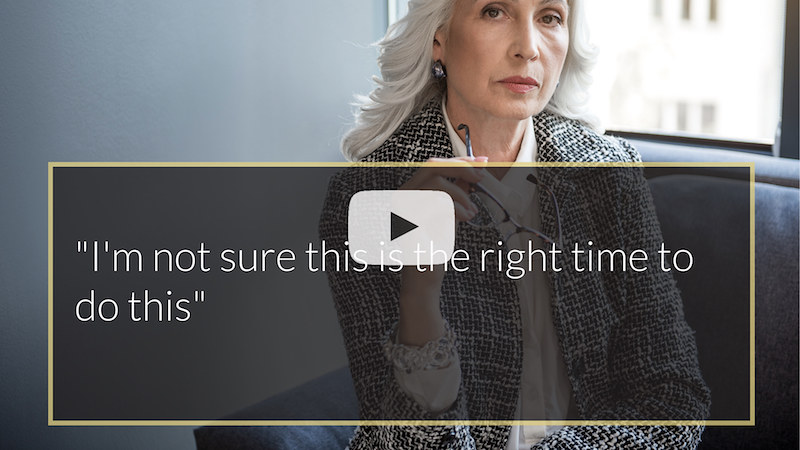
“I’m not sure this is the right time to do this”

“I’d like to think about it”
Educate yourself further about MIGS by reading the links below
Glaucoma UK – Minimally invasive glaucoma surgery options available in the UK
This 6-page guide provides you with the benefits of the iStent procedure, as well as the risks and alternatives. Click here for more information.
We are proud to be a part of these professional bodies
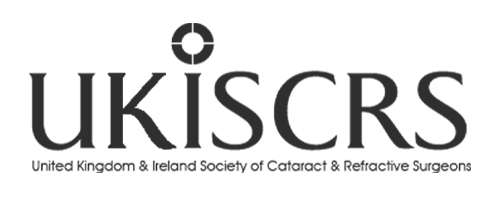

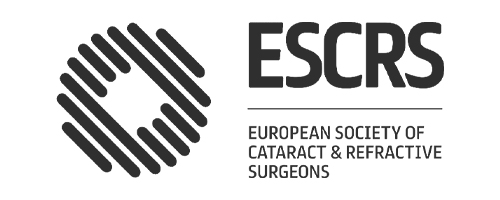





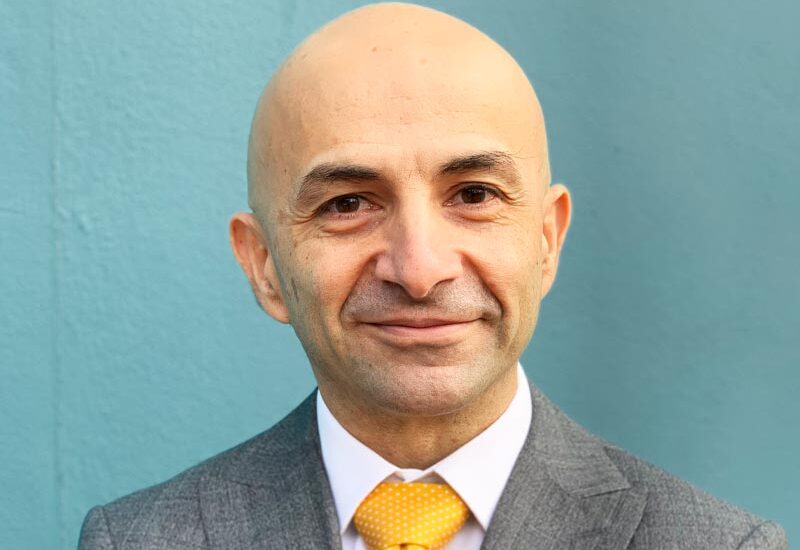
Prof Mohammed Muhtaseb, FRCOphth
Consultant Cornea, Cataract and Refractive Surgeon
Based in South Wales, he is one of the very few ophthalmologists working in the UK who is a fellowship-trained specialist in Cornea, Cataract and Refractive Surgery. He holds full specialist registration with the General Medical Council and was appointed as a Consultant in the NHS in 2006.
